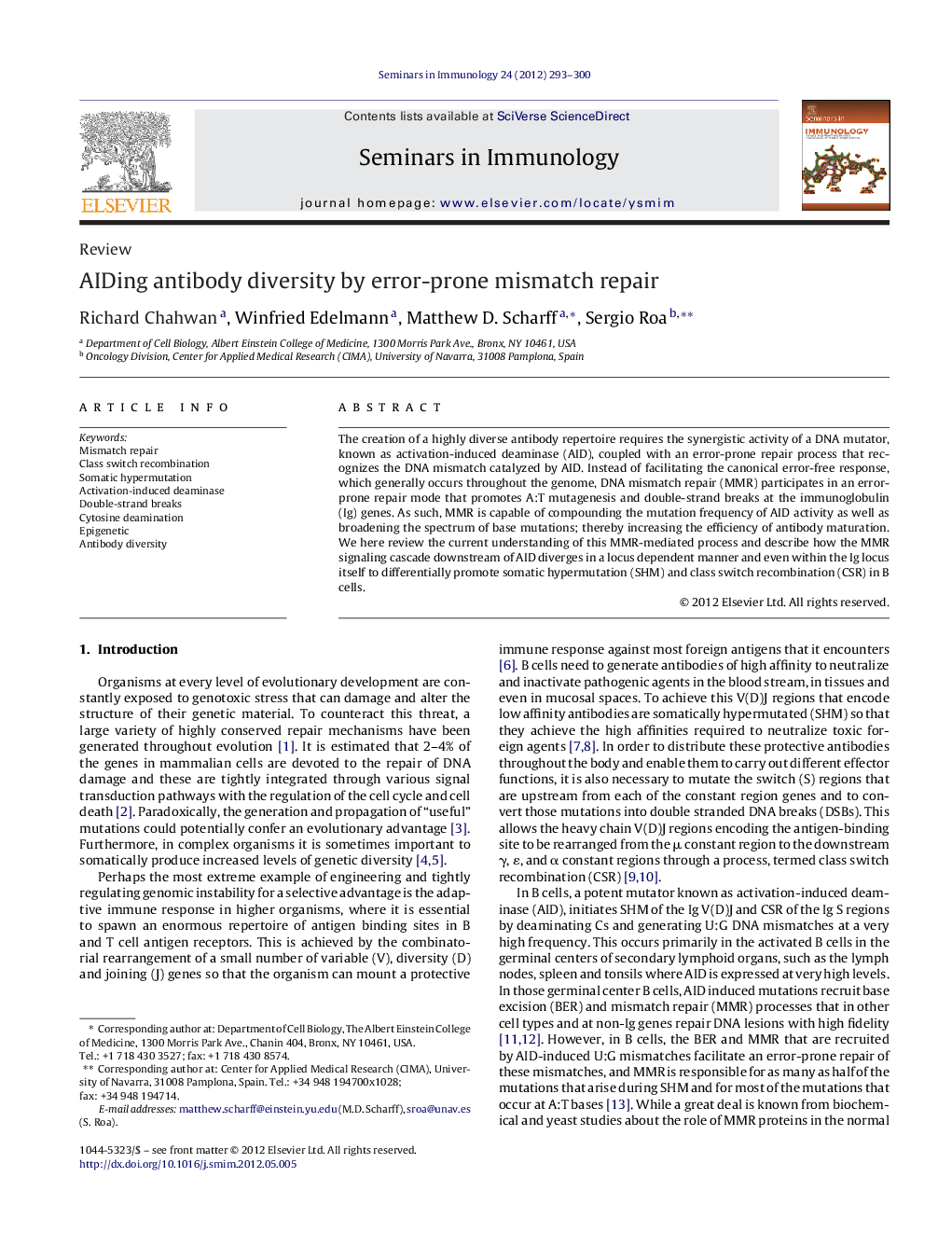| Article ID | Journal | Published Year | Pages | File Type |
|---|---|---|---|---|
| 3391508 | Seminars in Immunology | 2012 | 8 Pages |
The creation of a highly diverse antibody repertoire requires the synergistic activity of a DNA mutator, known as activation-induced deaminase (AID), coupled with an error-prone repair process that recognizes the DNA mismatch catalyzed by AID. Instead of facilitating the canonical error-free response, which generally occurs throughout the genome, DNA mismatch repair (MMR) participates in an error-prone repair mode that promotes A:T mutagenesis and double-strand breaks at the immunoglobulin (Ig) genes. As such, MMR is capable of compounding the mutation frequency of AID activity as well as broadening the spectrum of base mutations; thereby increasing the efficiency of antibody maturation. We here review the current understanding of this MMR-mediated process and describe how the MMR signaling cascade downstream of AID diverges in a locus dependent manner and even within the Ig locus itself to differentially promote somatic hypermutation (SHM) and class switch recombination (CSR) in B cells.
► The DNA mutator AID catalyzes U:G mismatches recognized by mismatch repair (MMR). ► MMR generally fixes DNA mismatches faithfully, except at the immunoglobulin genes. ► MMR differentially promotes A:T mutagenesis at V regions and DSB at S regions. ► The MMR sensor complex MutSα (MSH2/MSH6) promotes both SHM and CSR. ► The MMR adaptor complex MutLα (MLH1/PMS2) has no role in SHM but promotes CSR.
